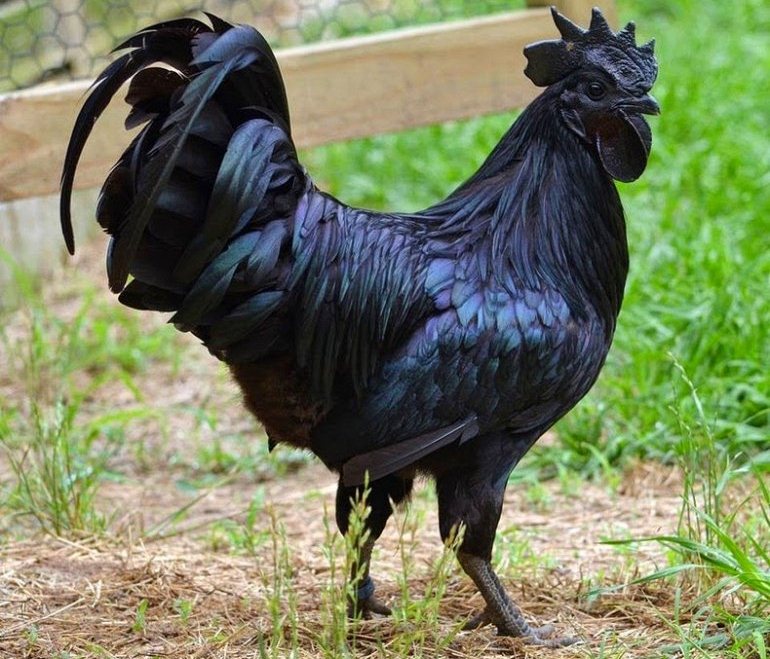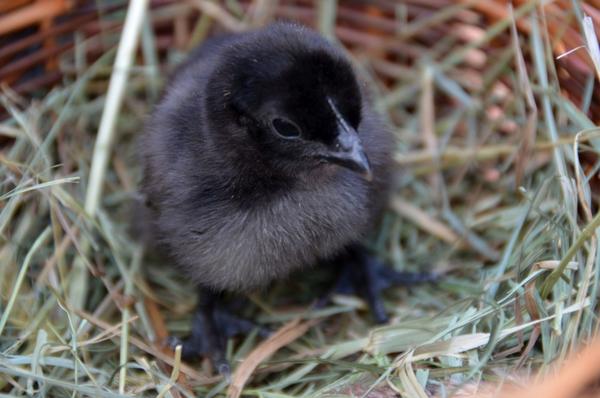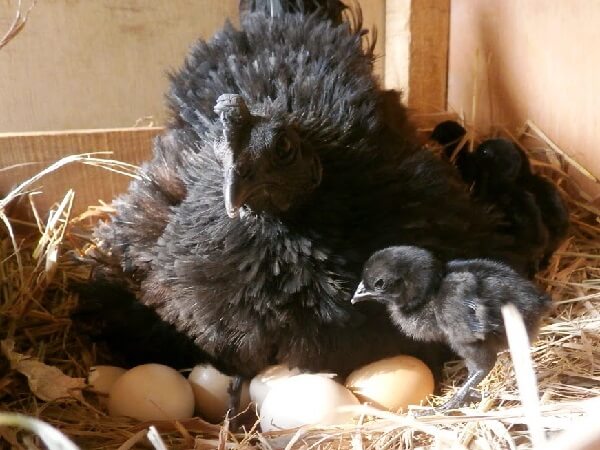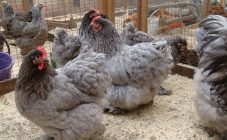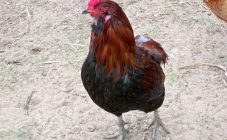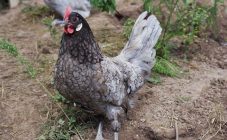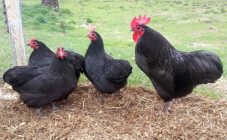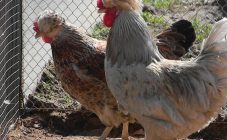Ayam Tsemani is a rare decorative breed of chickens originally from Indonesia, in recent years it has become in great demand in Russia among fans of exotic breeds and just chickens. Ayam in the local dialect means “chicken”, and cemani (pronounced by Javanese as chemani) means “pure black”. It turns out - a pure black chicken.
Chickens of this breed have a dominant gene that causes hyperpigmentation of the whole body. Chickens are like movable statues, carved completely from a whole piece of coal anthracite of the highest grade. Absolutely black on the outside and inside, even tissues and bones. In the homeland, chickens of this breed are used in various religious rituals and folk medicine. Roosters of this variety on the island of Bali are exhibited in cockfights.
The birds have black plumage with a greenish-purple tint, absolutely black legs, beak, crest, beard, earrings, meat, bones, internal organs, even the tongue and eyeballs are black! The slightest speck of light indicates that this is a cross.
Ayam Tsemani - a breed of chickens, which is described below, every year arouses more and more interest for its delicious meat among gourmets, which has really dietary properties.
Breed characteristics
The Ayam Tsemani chicken breed came to Europe at the very end of the 20th century. Today it has the following standards:
- absolutely black color of all visible parts of the body,
- the body is lean, trapezoidal, slender, small in size,
- the head is small, neat with a large ridge and large teeth,
- the beak is short with a characteristic curvature and thickening at the end,
- earrings are small and inconspicuous,
- chest slightly pushed forward, neck short,
- legs are dry and long, give out an excellent runner and jumper, 4 toes on the foot,
- wings tightly pressed,
- the cockerels wear gorgeous elongated braids that adorn the already fluffy big tail.
The breed has a high percentage of egg fertilization and chick survival.
Birds are very curious and active, brave and aggressive against equals, they run away where the forces are unequal. The cockerel Ayam Tsemani will wake up the owner with loud and clear trills, but at the slightest opportunity will try to bite.
Sexual maturity occurs late, by about 8 months, this is the fault of the dominant gene. The eggs themselves are light beige or brown with a normal flavor. Therefore, you should not believe in the myths about absolutely black eggs.
Features of breeding and care
For the purity of the breed, the Ayam Tsemani chicken family will have to be kept separate from other individuals, yes, in principle, they cannot be kept in a common chicken coop, since the breed is aggressive and fights to the death with strangers.
The optimal family composition is 5 females per 1 male. In this case, the eggs have almost one hundred percent fertility.
In the summer, chickens of this breed need walking, where they can get the opportunity to breathe fresh air, an addition to the diet from grass, small animals, seeds and other trifles.Walking yard should be well fenced, as the bird tends to jump high and even fly. And in conjunction with the fact that it is far from tame, it will be very difficult to catch it.
In winter, the floor must be covered with deep bedding: shavings, sawdust, straw or dry leaves. The roosts and the number of nests are established according to the norms usual for the egg-laying breed.
Ayam Tsemani is fed by the usual feeds for the breeder. Breeders prefer balanced feed for layers. This is the main type of food. Poultry intended for slaughter should be supplemented with meat waste, fish, vegetables, increasing the amount of protein consumed. In winter, grass flour and sprouted wheat should be added to the feed.
The maternal instinct is poorly developed, chickens do not strive to incubate eggs and care for the offspring, which is probably why the bird of this breed is rare in its homeland and costs a lot of money. Breeding is carried out by incubation.
Black chickens are not susceptible to various infectious diseases, since they have a consistently high immunity, fixed at the gene level. They say that even bird flu avoids them. But immunity is powerless against fleas, chewing lice, ticks and helminths. Only the owner is able to protect his pets from such misfortunes, maintaining cleanliness and maintaining order in the hen house, timely preventive disinfection and soldering the livestock with anthelmintic drugs.
Breed advantages and disadvantages
This breed has only two advantages:
- impressive appearance;
- high quality tasty meat.
They create much more problems:
- chicks and incubation material are very expensive,
- low number of eggs in a clutch,
- close relationship with wild chickens, hence the difficulties with contact and friendliness,
- the tropical climate in which the chickens lived did not give an opportunity to develop adaptability to the cold, the breed is thermophilic and jumpy, requires a carefully fenced walk with a net on top.
Since the disadvantages of this breed are much greater than the advantages, the poultry farmer should think 100 times before starting to breed them.
